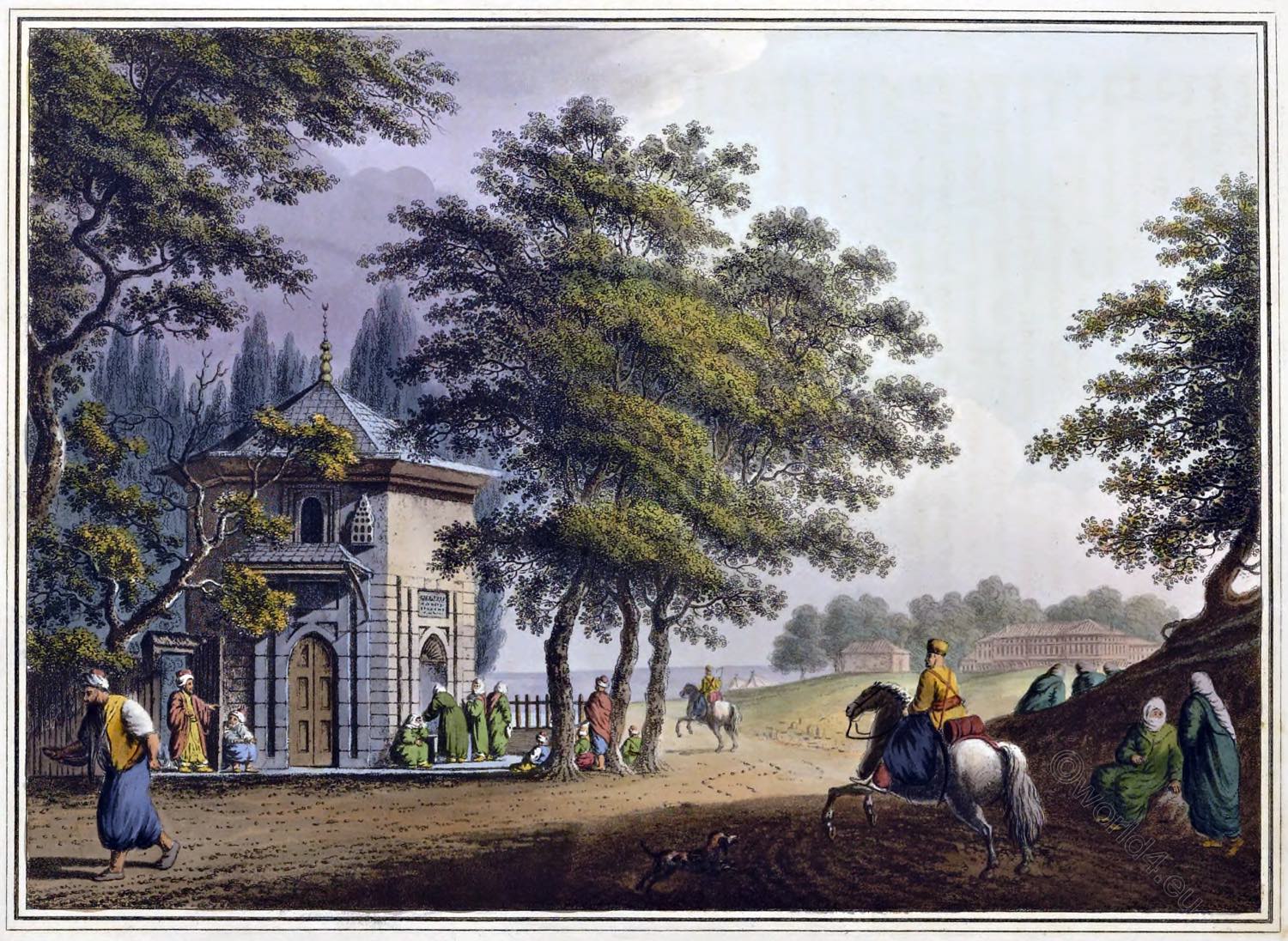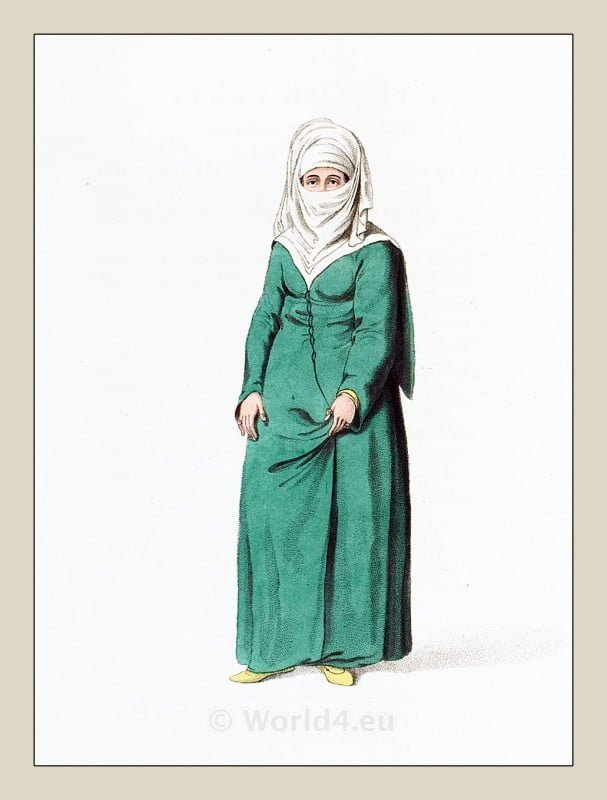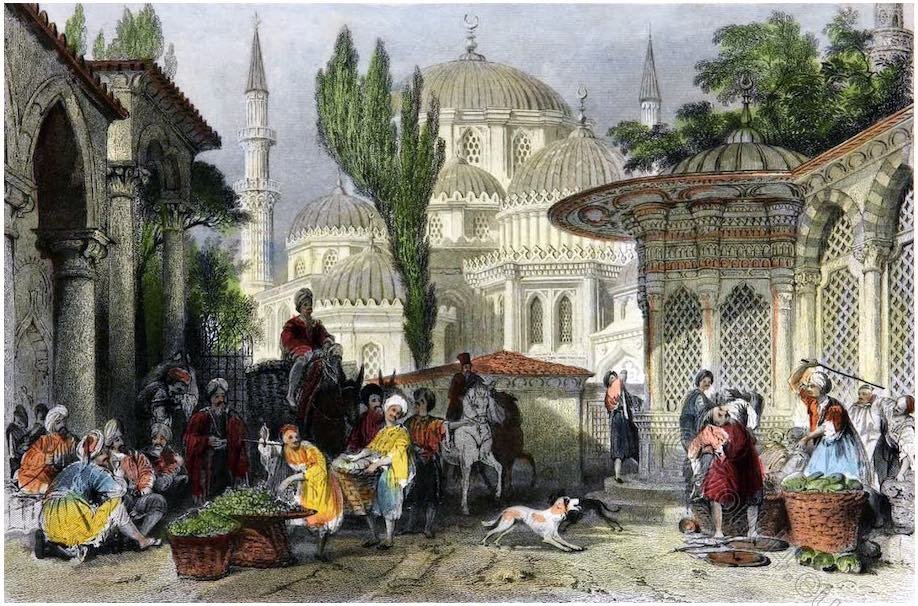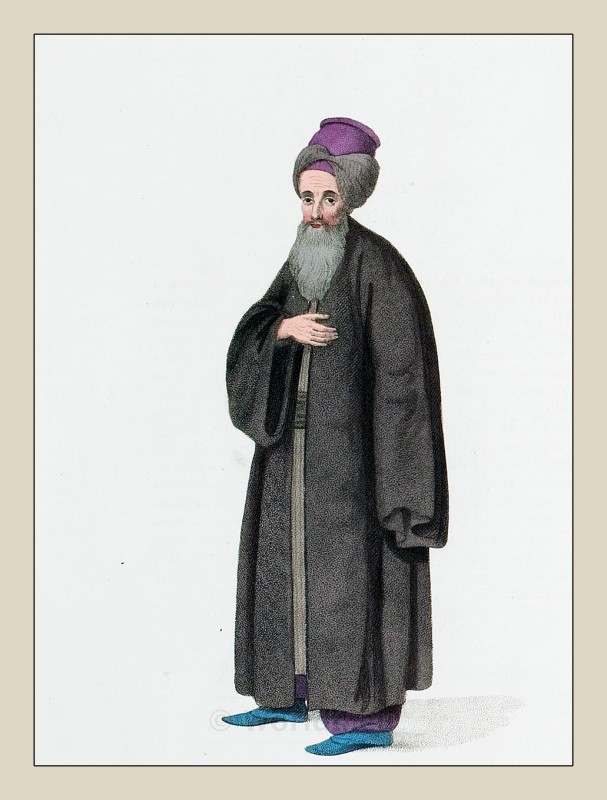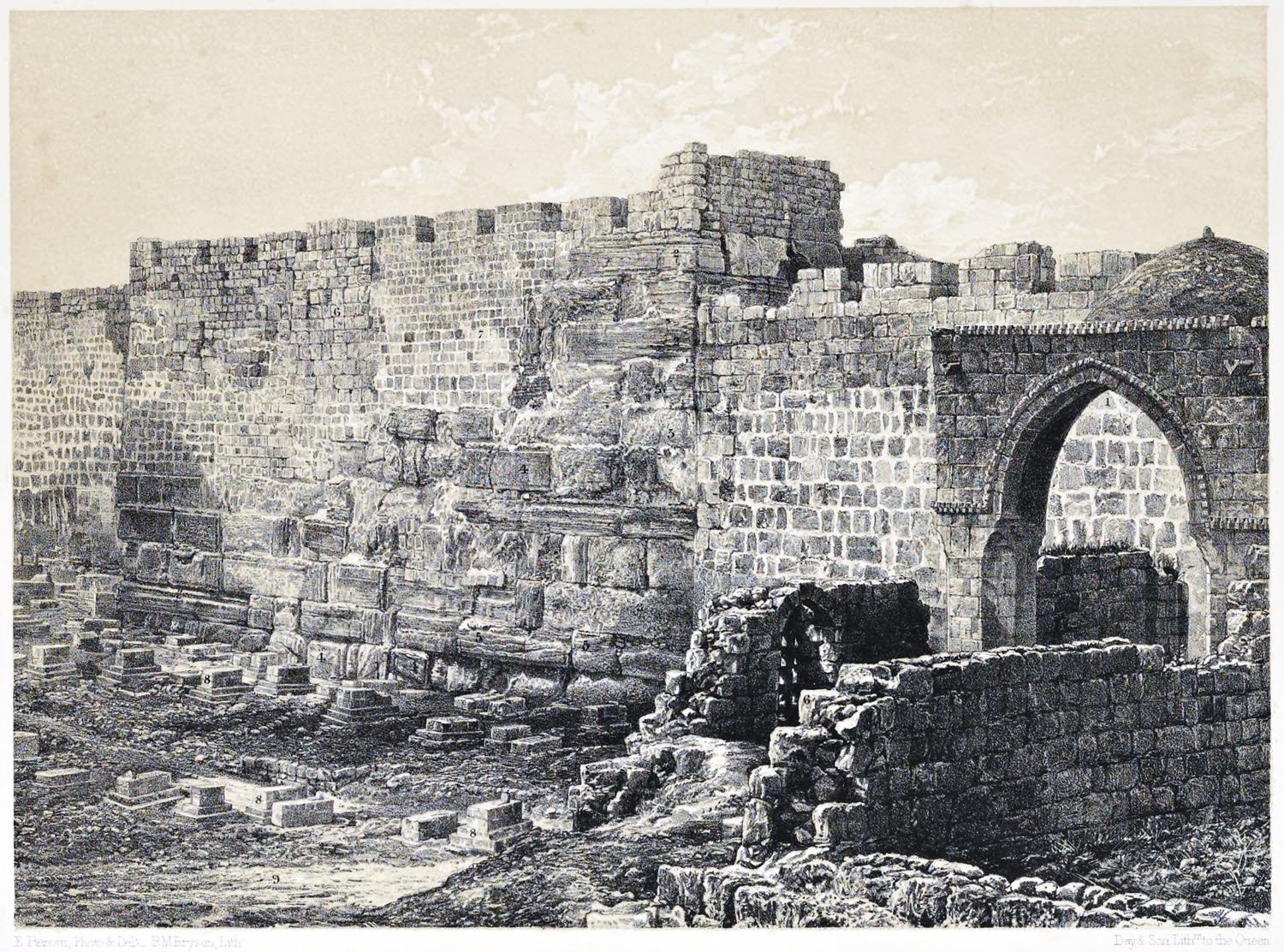CONSTANTINOPLE AND ITS ENVIRONS
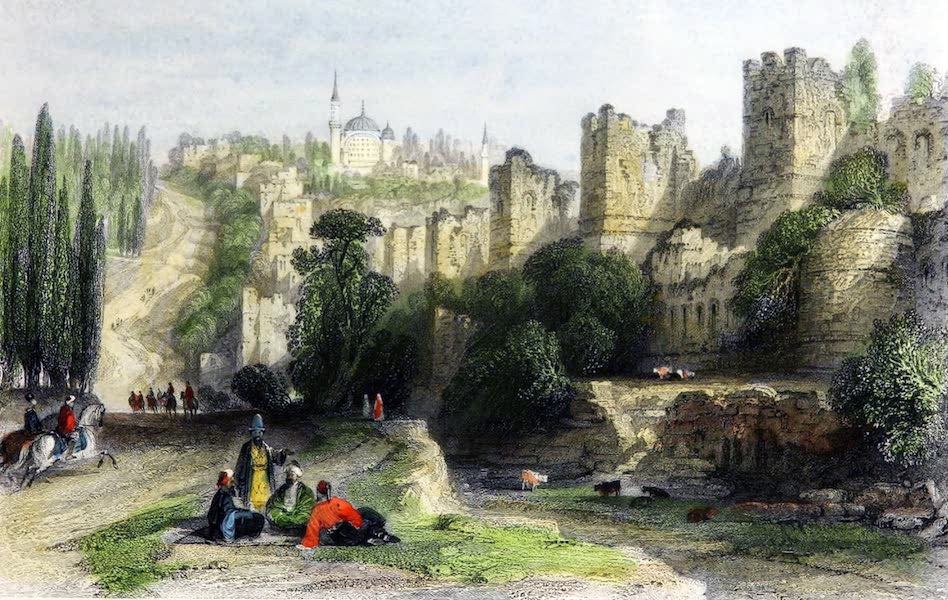
THE TRIPLE WALL OF CONSTANTINOPLE.
ON THE LAND SIDE, NEAR TOP KAPOUSI.
The walls of Constantinople, notwithstanding the shocks of earthquakes, the numerous assaults of besiegers, the decay of time, and the dilapidations of neglect, are at this day surprisingly perfect; and though fifteen centuries have passed since their first erection, they include the same space, and stand at the same elevation. The great wall, forming as it were the base of the triangular area on which the city is built, and running from sea to sea, is nearly five miles in extent: a broad high road passes parallel to and just under it, so that a traveller can view without interruption the whole line, from the Golden Horn to the Propontis, and contemplate, during a delightful walk, the most interesting remains perhaps existing in the world. In some places the rising ground so elevates him, that he sees a considerable part of the interior of the city over the walls, and he looks down upon places, hallowed by various recollections, which the narrowness and obscurity of the streets prevent his viewing from within.
This wall, originally erected by Constantine the Great, was enlarged by Theodosius, and is therefore called after his name. It suffered various shocks by violence of different kinds-of nature, time, and the hand of man-and was finally repaired by Leo and Theophilus. From the district called Blacherne, where it meets the harbor, it rises to an immense height, and towers to a surprising elevation above the head of the passenger. The uniformity is broken, however, by the remains of edifices on the summit of the wall, and the rich drapery of ivy and various trailing plants, which cover it. Here the wall, secured by its magnitude, is single, and presents but one defense. But at the gate called Egri Kapousi, or the crooked gate, where it forms an angle, the elevation is less, and the defense increased by a triple wall of three parallel fortifications, which extend to the Seven Towers and the sea.
The walls are eighteen feet asunder, crowned with battlements, and defended by fifty-nine towers, of various forms and sizes. Inserted in different places are tablets of stone or iron, containing inscriptions which commemorate events, or persons who repaired the walls; but most of them are now entirely effaced, particularly those on iron, by the rust and corrosion of the metal. The masonry in some parts consists of huge blocks of granite, resembling those early structures in Greece called Cyclopean, from the fancy of mythologists, that they had been erected by gigantic architects. In others, they are composed of alternate courses of broad flat bricks, resembling our tiles, and stones twice the thickness. Arcades and arches, both in the walls and towers, are formed, in a curious manner, of similar materials. The wall is entered by seven gates, called by the names of the towns to which they lead, or some circumstance connected with them. Of the latter, is the gate of Top Kapousi.
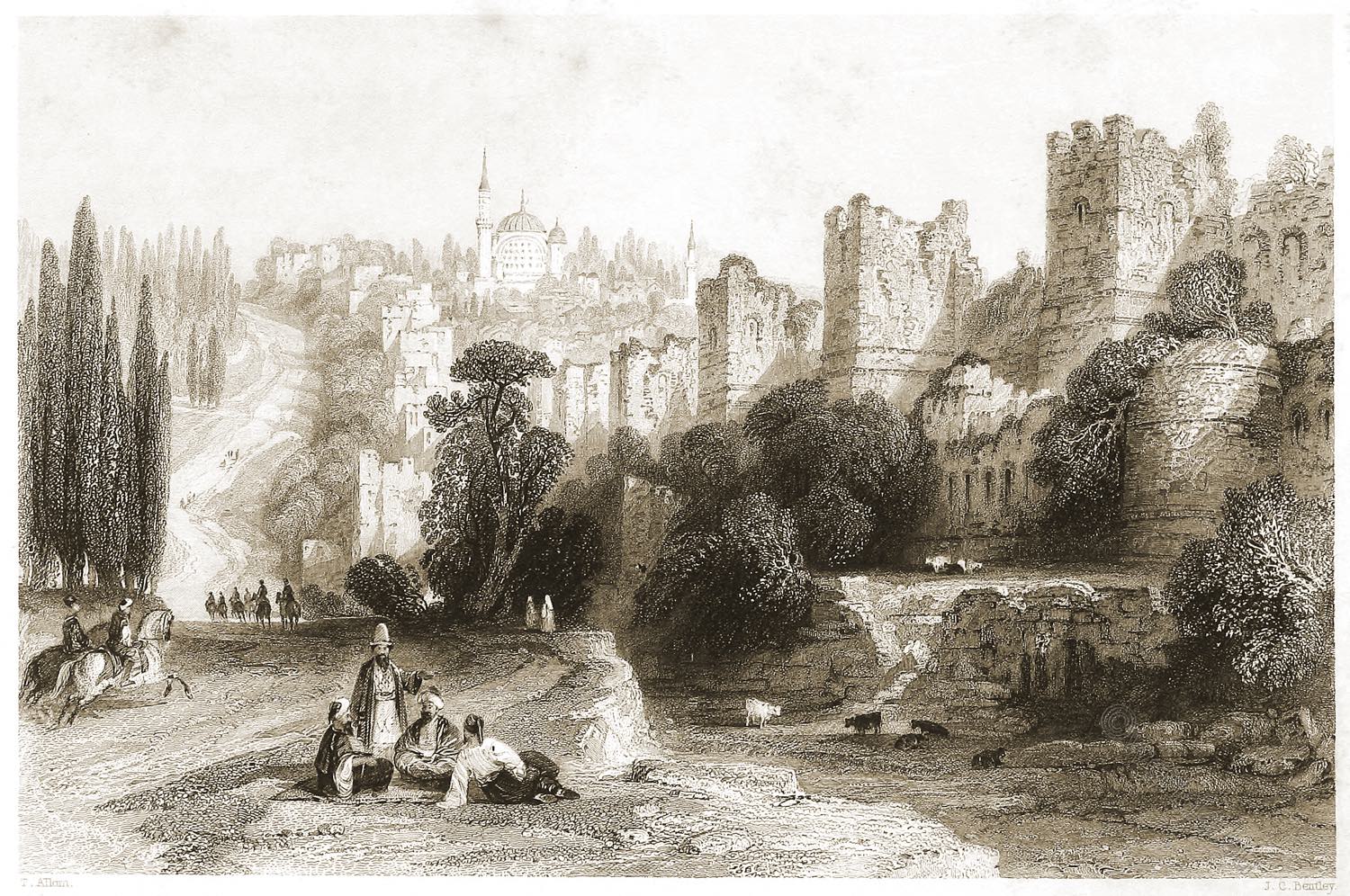
This gate, called also Porta Sancti Romani, as leading to the Greek church of St. Romanus, was that rendered memorable by the final attack of the Turks. Before it stands the Mal Tepé, one of those artificial mounds, supposed to be sepulchral tumuli, which are spread for many hundred miles over these regions, both in Europe and Asia. The summit commands an extensive view of the interior of the city, and here Mahomed II. erected the Sanjak-sheriff, or great standard of the Prophet, and directed the operations of the siege. Beside the gate are seen, yet unrepaired, the breaches made in the walls by that enormous artillery which he caused to be cast for the purpose, and on the summit of the gate are placed some of the huge granite balls discharged from them, in memory of the event; and hence the gate is now called Top Kapousi, or “Port of the Cannon.”
When the cross was sinking under the crescent, and the great capital of the Christian world was just falling into the hands of the followers of Mahomet, Constantine retired to the church of Sancta Sophia, and, after receiving, with his few faithful adherents, the solemn eucharist, proceeded to make his last effort in the breach. He was killed in the attack, and the Turks poured into the devoted city over his body. There is no tomb, or coin, or other artificial memorial, to preserve the name of this good and gallant man; but nature has herself supplied the neglect. There grows out of the breach some picturesque and venerable trees, on the spot where tradition says he fell; and travelers gather the red berries in their season, to sow and propagate at home these testimonials of the last and best of the Paleeologi,
Source: Constantinople and the scenery of the seven churches of Asia Minor illustrated. In a Series of drawings from nature by Thomas Allom (1804-1872). With an historical account of Constantinople, and descriptions of the plates by the Rev. Robert Walsh LL.D. (1772-1852). Fisher, Son, & Co, 1839. Newgate St., London; & Quai de L’Ecole, Paris.
Discover more from World4 Costume Culture History
Subscribe to get the latest posts sent to your email.

